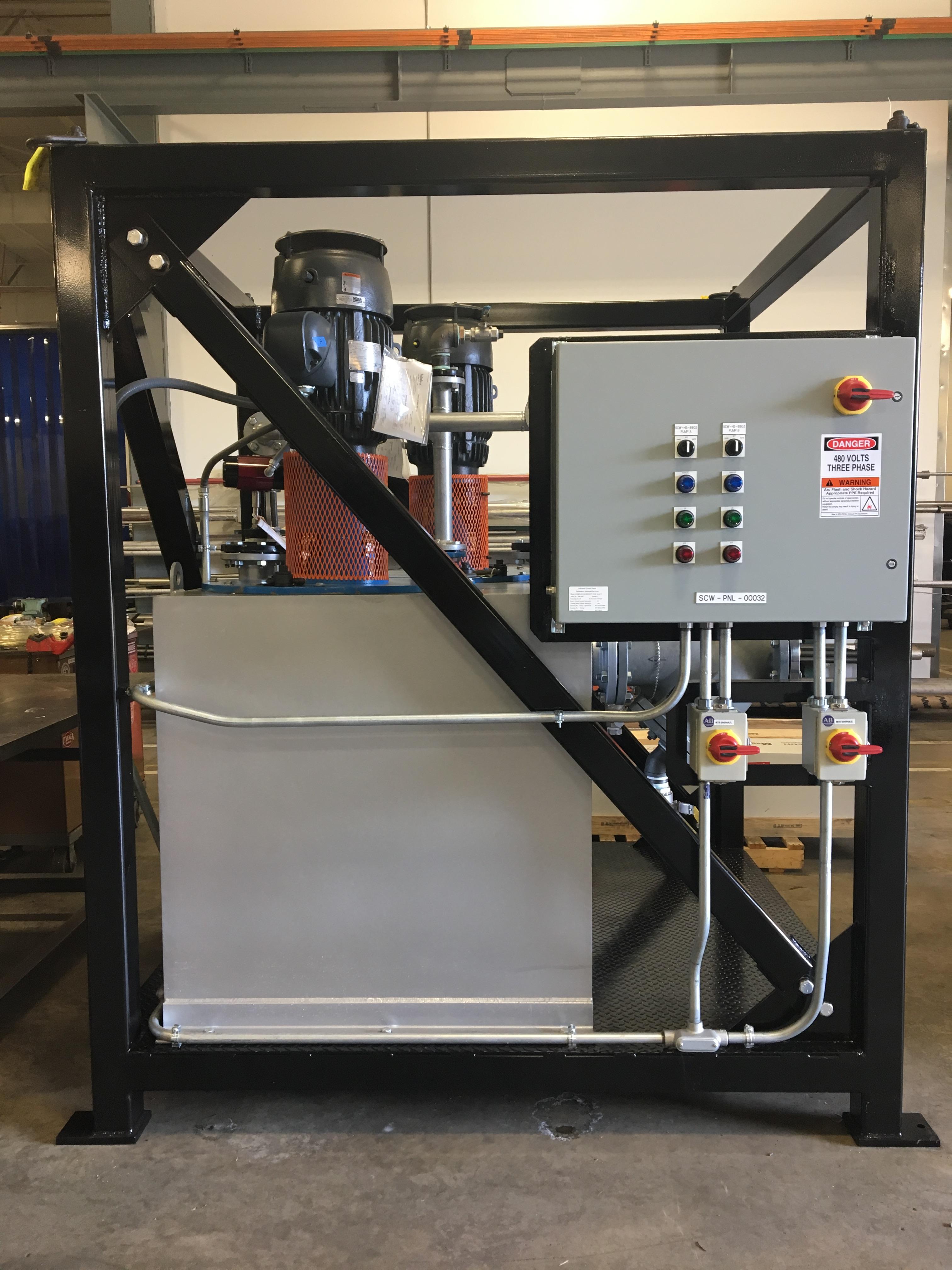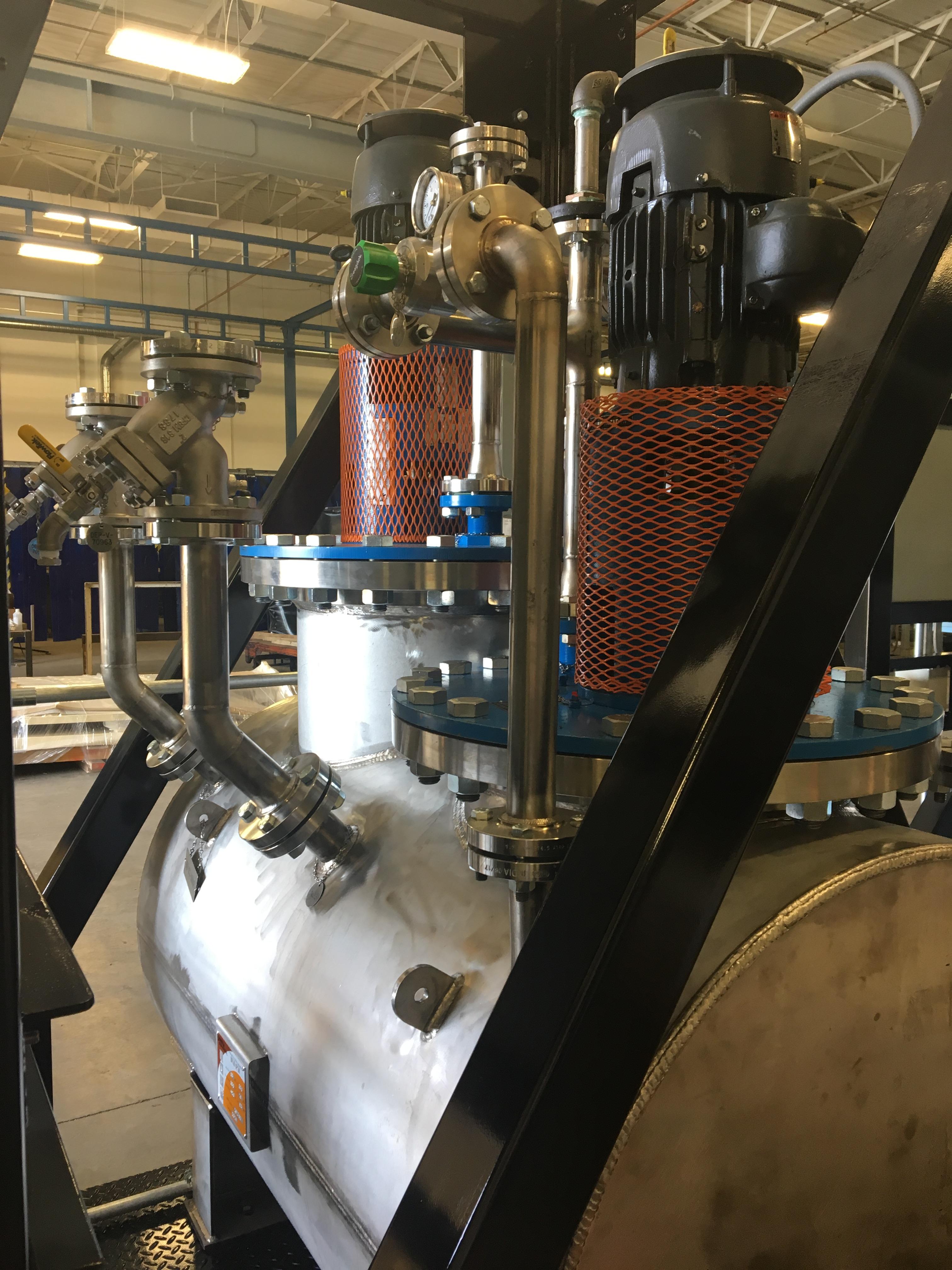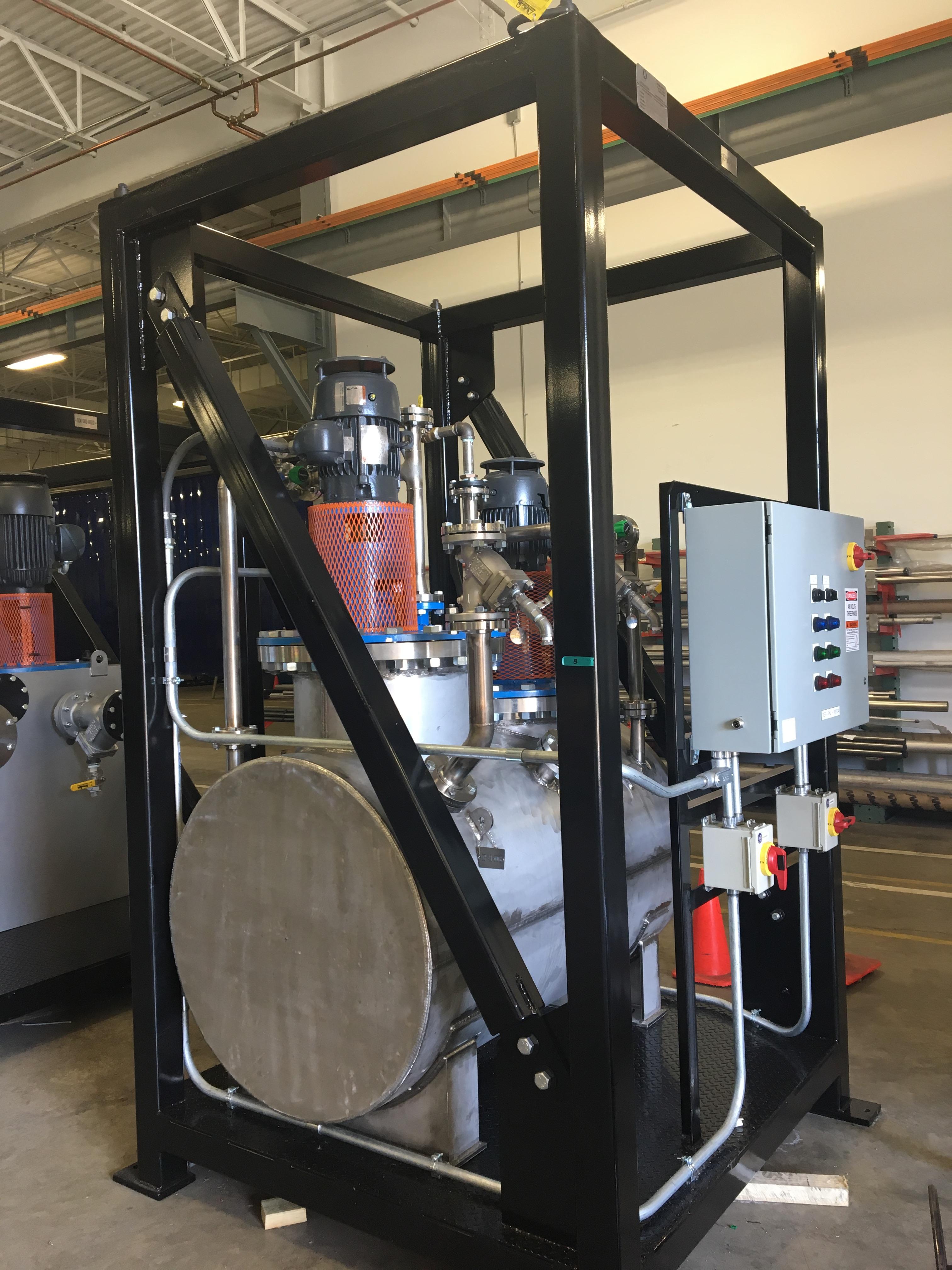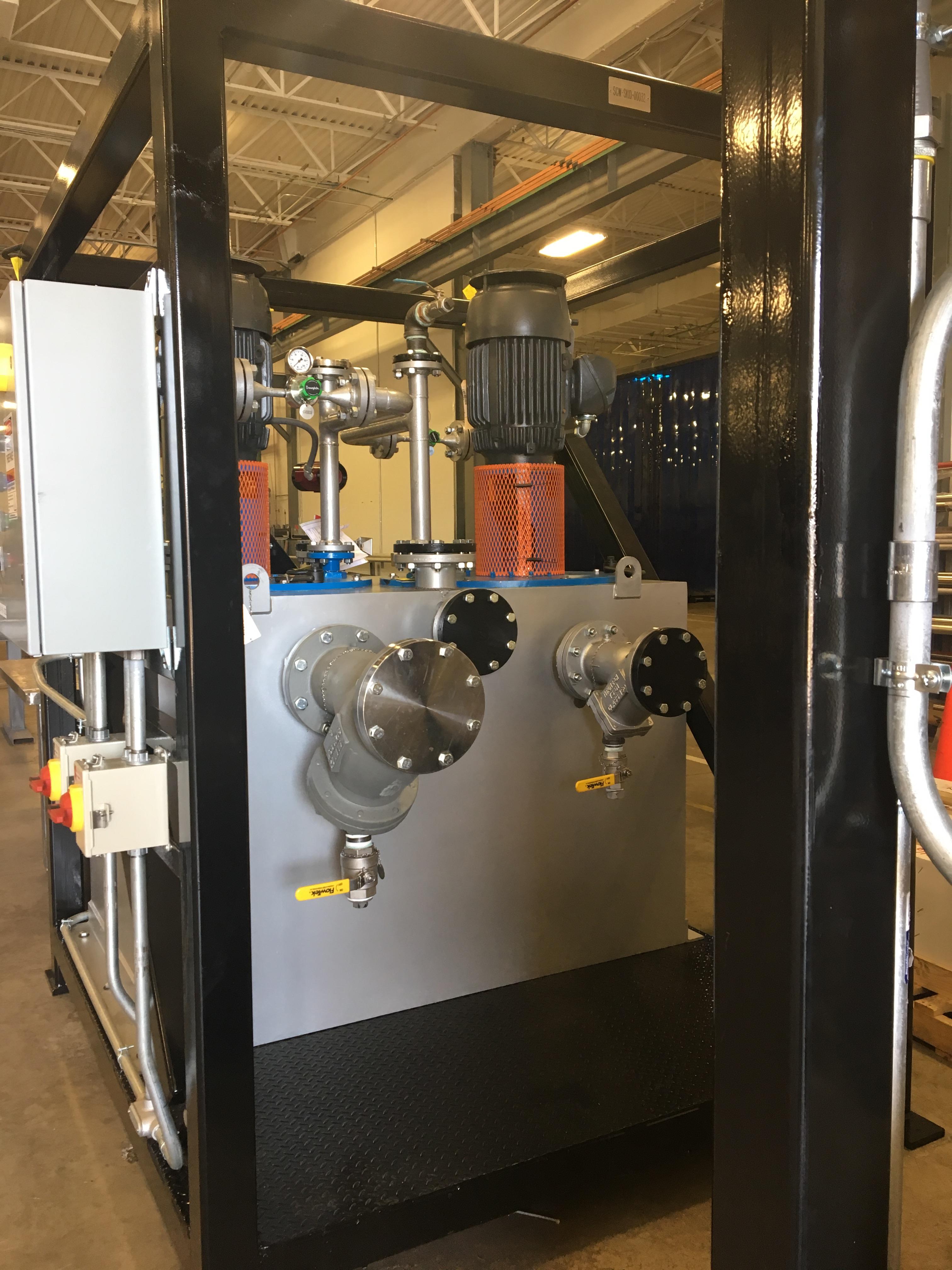
Skid systems solve a wide range of problems for many industries. Even waste processing in a hazardous industry, like one that handles radioactive waste, can be aided by a skid system. This project profile is an example of how a modular fabrication & assembly process can be applied to solve a difficult problem.
Bechtel National, Inc. (Bechtel) on behalf of the US Department of Energy and The Office of River Protection (which manages 177 underground radioactive waste storage tanks in Washington state) was responsible to design, construct, and commission a process and plant to process and vitrify radioactive waste into a stable form that is suitable for permanent storage. These tanks contain approximately 56 million gallons of radioactive waste. Optimation’s client, ITT, contacted us to partner with them in designing and fabricating steam condensate collection & pump out skids, which were needed as a part of the overall process.
Optimation engineered and fabricated two steam condensate collection skids comprised of ITT’s duplex vertically mounted submerged turbine pumps, which were mounted onto a receiver tank that collects and returns steam condensate for reuse in the overall process.

{{cta(‘2d895316-d842-459f-b2d4-43f352590ba4’)}}
The skids are designed to have one pump running and one in standby, and they alternate on startup between pump A and pump B to prolong service life. A highly accurate digital level transmitter indicates instantaneous tank volume and communicates with the client’s software.
The tanks contain strainers & blowdown valves on each of its inlets to prevent debris from entering the tank, as well as Back Pressure Regulating Valves to prevent pump discharge over-pressure conditions, such as deadheading.

The control system includes individual pump disconnects, and the local control panel on the skids has indicator lights on the front panel showing pump status. This control system allows remote operation of the pumps from a client’s control room, or stand-alone manual operation right at the skid location in the plant.
This is a great example of how support equipment can be self-contained in a skid to complete your overall process. The skid system can be built and tested off-line in a shop, shipped and installed at your site, plugged in and turned on.

{{cta(‘8b7232be-ff1f-4061-97a8-ff914fbd4f74’)}}
